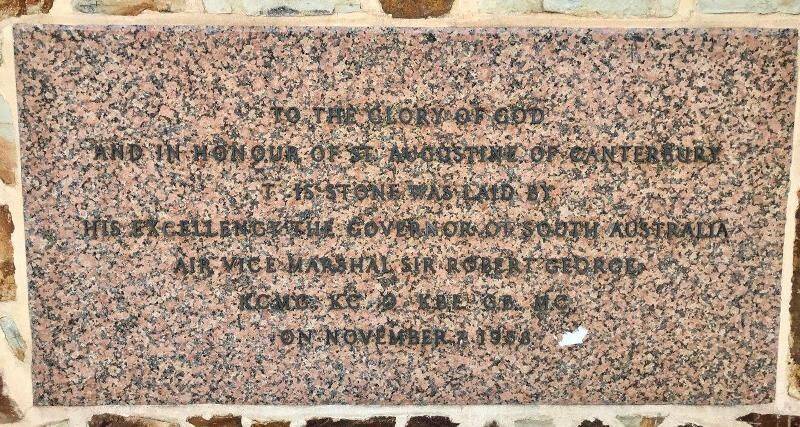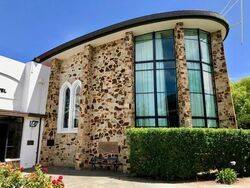
St Augustine of CanterburyPrint Page 
The chapel of the school commemorates St Augustine of Canterbury.
Saint Augustine of Canterbury, also called Austin, (born possibly in Rome and died May 26, 604/605, Canterbury, Kent, England) was the first archbishop of Canterbury and the apostle to England, who founded the Christian church in southern England.
Probably of aristocratic birth, Augustine was prior of the Benedictine monastery of St. Andrew, Rome, when Pope St. Gregory I the Great chose him to lead a mission of about 40 monks to England, which was then largely pagan. They left in June 596, but, arriving in southern Gaul, they were warned of the perils awaiting them and sent Augustine back to Rome. There Gregory encouraged him with letters of commendation (dated July 23, 596), and he set out once more.
The entourage landed in the spring of 597 on the Isle of Thanet, off the southeast coast of England, and was well received by King Aethelberht (Ethelbert) I of Kent, who gave the missionaries a dwelling place in Canterbury and the old St. Martin’s Church, where he allowed them to preach. With Aethelberht’s support, their work led to many conversions, including that of the King. In the following autumn Augustine was consecrated bishop of the English by St. Virgilius at Arles.
Thousands of Aethelberht’s subjects were reportedly baptized by Augustine on Christmas Day 597, and he subsequently dispatched two of his monks to Rome with a report of this extraordinary event and a request for further help and advice. They returned in 601 with the pallium (a symbol of metropolitan jurisdiction) from Gregory for Augustine and with more missionaries, including the celebrated saints Mellitus, Justus, and Paulinus. Gregory, with whom Augustine corresponded throughout his apostolate, directed him to purify pagan temples for Christian worship and to consecrate 12 suffragan bishops; thus, he was given authority over the bishops in Britain, and the evangelization of the Kingdom of Kent began.
Augustine founded Christ Church, Canterbury, as his cathedral and the monastery of SS. Peter and Paul (known after his death as St. Augustine’s, where the early archbishops were buried), which came to rank as the second Benedictine house in all Europe. Canterbury thus was established as the primatial see of England, a position maintained thereafter. In 604 he established the episcopal sees of London (for the East Saxons), consecrating Mellitus as its bishop, and of Rochester, consecrating Justus as its bishop.
At a conference with British bishops, Augustine tried in vain to unify the British (Celtic) churches of North Wales and the churches he was founding. A second conference, his last recorded act, proved equally fruitless.
Location
| Address: | 190 South Terrace, Pulteney Grammar School, Chapel, Adelaide, 5000 |
|---|---|
| State: | SA |
| Area: | Foreign |
| GPS Coordinates: | Lat: -34.935157 Long: 138.602827 Note: GPS Coordinates are approximate. |
Details
| Monument Type: | Structure |
|---|---|
| Monument Theme: | People |
| Sub-Theme: | Religion |
Dedication
| Actual Monument Dedication Date: | Friday 31st July, 1959 |
|---|
Plaque :
To the glory of God and in honour of St Augustine of Canterbury
This chapel was dedicated by the Right Reverend Thomas Thornton Reed, D. Litt. sixth Lord Bishop of Adelaide
July 31 1959
Plaque :
To the glory of God and in honour of St Augustine of Canterbury
This stone was laid by His Excellency the Governor of South Australia Air Vice Marshal Sir Robert George K. C. M. G., K. B. E., C. B., M. C. on November 7 1958








